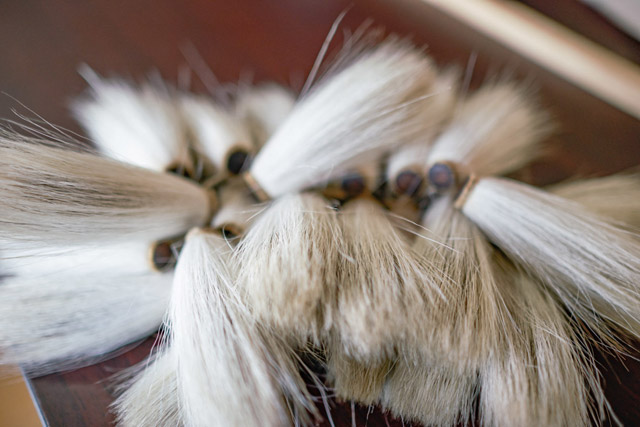
Once an essential part of any stationary set, fude calligraphy brushes are now less a part of everyday life and more recognized for the artistic pursuit of traditional writing. Now with only twenty to thirty craftsmen left producing fude from animal hair, there’s a renewed sense of purpose to preserve this craftwork.
-
Brush making originally appeared during the Heian Period under the school of Kiyokawa Sakanai from Nara where the production of sumi black ink flourished. The craft was further developed by the monk Kukai, and in 1977, Nara-fude, the tradition of brush making in Nara was designated as a Traditional Art Craft.
![]()
Born and raised in Nara, Tanaka Chiyomi was a housewife when she applied for a government program that funded and trained new craftsmen in brush making. Never having been involved in craft making throughout her entire life, suddenly Chiyomi felt she had found her calling, and was eventually certified as the first female Nara-fude Japanese Traditional Craftsman.
Chiyomi strives to encourage more awareness and active use of the Nara-fude by organizing workshops, especially for people who are interested in experiencing shodo (calligraphy). One of Chiyomi’s happiest moments is when someone purchases a brush that she originally thought would not be popular, further motivating her to create original brushes using various materials.![]()
![]()
![]()
As for Nara itself, she is positive about the increase in foreign tourism, but doesn’t want the area to change. The city doesn’t have high buildings, and has a quiet, peaceful, and traditional atmosphere. Many of the tourists who visit her shop are actually painters, as her brushes can create lines that normal paintbrushes cannot. In fact, even Chiyomi herself doesn’t do calligraphy, as her mentor advised her that if she does she will only make brushes for her own tastes at the expense of her customers.
![]()
Within the city, her favorite spot is the fifty-two steps leading to Kofuku-ji where she can relax during work breaks, and she feels a sense of accomplishment after walking up the steps. Her second favorite is along the Akishino river to Heijokyo. “Compared to Kyoto or Osaka”, she tells us, “the city is rather slow-paced and calm. You can tell that Nara people truly value serenity. I’d like Nara to remain this way”.
naramachiの宿
奈良市藥師堂町11-2 Nara







 Go here
Go here





